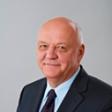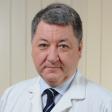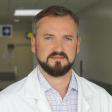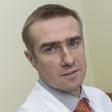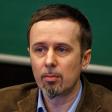Department of Surgery
Department of Surgery provides training in General, Thoracic, Cardiac, Vascular Surgery and Urology and prepares students for individual practical work with patients as well as carries out research activities.
Main research directions
- Pancreatic surgery, treatment tactics for thyroid nodules
- Hepatobiliary surgery
- Urgent surgery
- Cardiac and vascular surgery
- Urology
Summary of scientific activities on the RSU Research Portal
Contacts at clinical bases
- Cardiac Surgery (PSKUS)
- Valentīna SoboļevaSecretary, Department of SurgeryPauls Stradiņš Clinical University Hospital13 Pilsoņu iela, Riga32. korpuss, ieeja B3, V stāvs+37167069546
- Surgery courses (RAKUS Gaiļezers)
- Urology course (RAKUS Gaiļezers)
- Zaiga SparāneStudy Process Organiser, Department of SurgeryRiga East University Hospital, GaiļezersRīga, 2 Hipokrāta iela1. korpuss, ieeja AB1, IV stāvs, B451. kab.+37126417221
History of the Department
There were several departments of surgery at the University of Latvia (UL) Faculty of Medicine. The Department of General Surgery, also known as the Surgical Propaedeutics Clinic, conducted courses for 3rd-year students. The Department of Surgery taught 4th-year students, while the Department of Hospital Surgery was responsible for the 5th and 6th-year students. In the academic year 1940/41, the departments were merged into one Department of Surgery, headed by Professor Pauls Stradiņš. At the Rīga Medical Institute, there were three similarly named departments, along with the Department of Operative Surgery and the Department of Topographic Anatomy. However, by the decision of the Senate of the Medical Academy of Latvia (MAL) (27.06.1995) and Rector’s Decree No 07/13 (28.06.1995), all surgical departments were consolidated into a single RSU Department of Surgery with Professor Jānis Gardovskis as its head.
Prof. J. Gardovskis is a full member of the Latvian Academy of Sciences (2006), President of the Latvian Association of Surgeons (2004—2008), Vice-Rector of Rīga Stradiņš University Clinics (2007—2008), Rector of Rīga Stradiņš University (since 2008); author of three books. Prof. J. Gardovskis’ main research areas include video-assisted surgery, pancreatic surgery, transplantation surgery, oncological surgery, hereditary oncological diseases, and quality of life in surgery.
- Faculty Department of Surgery
Faculties started conducting surgery course at the UL Faculty of Medicine in 1922. While, the department with a permanent head was established in 1924 (see The formation of surgery departments in the 1920s and 1930s). Initially called the Faculty Department of Surgery, it was renamed the 2nd Department of Surgical Diseases in 1984, and later the 2nd Department of Surgery, until the reorganisation of all surgical departments in 1995.
The clinic and department were initially located in Riga City Hospital No 1, and from 1928, they moved to Riga City Hospital No 2 (now known as Pauls Stradiņš Clinical University Hospital).
The first head of the Department of Surgery, Professor Jēkabs Alksnis, was one of Latvia's most experienced surgeons, with extensive experience as a war surgeon in Russia and during the Latvian liberation battles. Under his leadership, the clinic mainly focused on developing abdominal surgery. Additionally, the clinic emphasised urology, with Professor Alksnis’ son, Arvēds Alksnis, becoming a specialist urologist (see also "Department of Hospital Surgery").
In the academic year 1940/41, when a single department of surgery was created, P. Stradiņš was appointed its head. J. Šulcs and V. Mincs were appointed professors, A. Bieziņš, O. Mačs, J. Tiesnieks were appointed assistant professors, K. Dolietis and T. Vītols were appointed senior lecturers. Z. Dreizenštoks, J. Ekšteins, J. Ērtums, Ļ. Hnohs, J. Janitēns, A. Kaķis, K. Kārkliņš, K. Encenbergs, A. Lūsis, J. Majors, K. Mētra, P. Purviņš, P. Riekstiņš, I. Vikmanis, and O. Zariņš were appointed as assistants. During the German occupation, the Department was headed by J. Šulcs. Since autumn 1944, the Faculty Surgery Clinic and the Department were again headed by Professor Pauls Stradiņš.
Pauls Stradiņš has thus been the chair for the longest time – nearly 15 years. His connection with the Faculty Surgery Clinic and Department is so enduring that people still refer to it as the "Stradiņš Clinic" and the "Stradiņš Department." After the war, Pauls Stradiņš was very active in the restoration of the Latvia’s medical service and medical education: from 1944 to 1947, he was the chief physician of Riga City Hospital No 2 and also the Dean of the Faculty of Medicine.
In the first post-war years, there was a shortage of specialists and teaching staff. Many had emigrated, fearing communist repression, while others who had been conscripted into the German army faced distrust upon their return to Riga. Thus, in 1951 Ernests Burtnieks and Aleksejs Čukalovskis (the party secretary) declared Ēvalds Ezerietis unfit for pedagogical work because he had served as a military surgeon in the German army with the rank of lieutenant. Still, some returned to the clinic Jānis Slaidiņš, who heroically helped Latvians conscripted into the German army escape to Sweden by diagnosing them as sick and wounded, rejoined the clinic. Eduards Smiltens, a urologist and former legionnaire, also came back. These returns helped partially resolve the issue of staffing the clinic with necessary specialists. However, Professor Stradiņš faced criticism for opposing the trend of involving more immigrants from the "elder brotherly republics" in health protection and research work.
The surgery course was conducted at the Faculty of Medicine to 4th year students. Professor Stradiņš delivered lectures in an engaging, comprehensive manner, richly illustrating the lecture material with examples from practice. Professor Stradiņš typically entered the auditorium, now named after him, with a Russian textbook on faculty surgery by popular authors of the time. During his lectures, he would occasionally glance at the book but never simply recited its contents. Instead, he used it as a guide, adding his insights and experiences. Unfortunately, recording technology was not available at that time to capture his valuable lectures. Professor Stradiņš also personally conducted the examinations, though his busy schedule made the process unique. Exams for a group of students would start in the morning and often extend into the evening. After examining one or two students, he would leave to attend to other duties. At the beginning of the day, he listened attentively and sometimes explained surgical techniques using visual aids like a towel. But by the end of the day, the professor did not have as much energy left. Therefore, those students who were more afraid of the exam tried to stay last, hoping that the exam would be easier by then.
- Research areas of the Department
Professor Stradiņš had a wide range of interests. There was not a single current medical problem in which he did not take some interest. He was a pioneer in Latvia, performing many first-time operations on abdominal organs and enhancing the techniques for these procedures. Notably, he refined surgeries for gastric and duodenal ulcers and, in 1950, introduced the two-stage transthoracic gastrectomy. His work on abdominal surgery was furthered by I. Sjakste, A. Pakalns, J. Gardovskis, and G. Trofimovičs. As cardiac surgery advanced, Professor Stradiņš organised preliminary work on these operations in his clinic as early as 1955, starting experimental cardiac operations. In 1958, the first heart operations on congenital and acquired heart diseases were successfully performed in Professor Stradiņš’ clinic: on 31 March 1958, Ē. Ezerietis performed the clinic's first successful cardiac surgery, a mitral commissurotomy. Apart from Ē. Ezerietis, J. Slaidiņš and V. Utkins worked in cardiac surgery. The clinic also pioneered reconstructive surgeries on major blood vessels and established a Scientific Research Laboratory for Experimental Surgery and Extracorporeal Circulation in 1962. This laboratory was the first in Latvia to use an artificial kidney and develop regional artificial circulation for treating malignant tumors of the extremities. In 1947, P. Stradiņš performed the first transthoracic oesophageal resection in Latvia, and in 1956 – the transsternal extirpation of a mediastinal tumour. In 1957, the clinic successfully performed the first pneumonectomy. Key contributors to thoracic surgery included Ē. Ezerietis, J. Slaidiņš, and O. Aleksis, with V. Utkins performing complex bronchial and tracheal resections.
In 1969, a specialised national centre was established - the Association for the Study, Science, and Practice of Pulmonology. It included the Department, the Department of Pulmonary Surgery of the CZPL and three departments of the Pauls Stradiņš Clinical University Hospital (head of the Centre – V. Utkins).
J. Gardovskis and G. Ambalovs addressed the issues of esophageal surgery. While, V. Utkins studied the diagnosis and treatment of cardiospasm, and the surgical treatment of oesophageal cancer and diverticula.
Professor Stradiņš also contributed significantly to the field of endocrinology, performing Latvia's first pituitary surgery on a patient with acromegaly. His work was continued by Ē. Ezerietis, who focused on the surgical treatment of cartilage, and J. Gardovskis. As a student of the renowned surgeon and urologist Fjodorovs, Stradiņš made notable contributions to urology and uro-oncology. He performed Latvia's first bladder extirpation on a patient with a malignant bladder tumor. After Professor Stradiņš, the issues of urology were addressed by E. Smiltens, J. Slaidiņš, B. Solommjaks and V. Lietuvietis. Pauls Stradiņš was a pioneer of the fight against cancer in Latvia. In the field of oncology, the work initiated by the professor was continued by E. Ezerietis, V. Rozenbaha, and J. Gardovskis.
- Department of Hospital Surgery
The Department began its work in 1922 with the appointment of its first permanent head (see The formation of the Department of Surgery in the 1920s and 1930s). In 1983, its name was changed to the 1st Department of Surgical Diseases, and later (until the reorganisation of surgery departments in 1995) to the 1st Department of Surgery. Initially, the department was based at the Riga Red Cross Hospital, located at Jāņa Asara iela 3, until 1940. It was then moved to the Riga City Hospital No 1 at Bruņinieku iela 5. In December 1920, the Hospital Surgery Clinic was established within the Latvian Red Cross Hospital, which had a well-equipped operating theatre and an outpatient surgical room. Additionally, the clinic utilised facilities in the 2nd Surgical Department of Riga City Hospital No 1.
The first head of the department Jānis Jankovskis had studied in Kiev and graduated from the University of Berlin, worked at the St Petersburg Academy of Military Medicine under Professor A. Lebedev, and for a year in Berlin under Professors Senator and Nagel. In 1910, he defended his dissertation on injuries of the abdominal organs at the University of Tartu and received the degree of a Doctor of Medicine. A. Neibergs, J. Šulcs, and A. Mednis worked as assistants to Professor Jankovskis. While, J. Jēgermanis and K. Tiesnieks were his subassistants. Jānis Jankovskis was also the founder and the first head of the Latvian Red Cross (1918). Thanks to his initiative, a school of nurses (now the Red Cross Medical College) was founded in Riga in 1921, and a sanatorium for bone tuberculosis was established in Krimulda in 1922. After the premature death of Professor Jankovskis in 1926, Jānis Dzirne was elected head of the department.
Jānis Dzirne was a remarkable personality. After graduating from the University of Tartu (1888) and obtaining his doctorate (1891), and after further training in Germany, Russia, and Switzerland with the most eminent surgeons of the time, Dzirne worked in Russia as an assistant at the gynaecology clinic of the University of Tartu, as a zemstvo doctor and a military surgeon. In 1909, he was appointed professor at Moscow University, director and head of the Department of Urology at the Hospital Clinic of Urological Surgery. That same year, he published his book Cistoskopija (Cystoscopy), followed by manual Operatīvā uroloģija (Operative Urology) in 1914. Moscow's medical historians consider Dzirne one of the most distinguished Russian urologists of his era. During World War I, he served as a military surgeon, then worked as a doctor in Poland, Moscow, the Caucasus, Turkey, Bulgaria, and Germany. In 1922, he was invited to the newly established University of Kaunas but left after a year to serve as the General Medical Inspector in Abyssinia (Ethiopia) and later as the personal physician to Emperor Haile Selassie I. In 1926, Jānis Dzirne was elected professor of the Department of Hospital Surgery at the University of Latvia. He wrote the first surgical book in Latvian, Praktiska ārsta ķirurģija (Practical Doctor’s Surgery), published in 1928. In 1929, he travelled abroad again to Egypt, Australia, and Iraq, where he ultimately disappeared from records. Due to Dzirne’s illness at the end of 1928, the clinic was headed by Jānis Frīdrihs Šulcs, who became the full head of the department in 1934. He studied medicine in Vienna and Zurich, graduated from the University of Tartu (1911), and furthered his knowledge of gynaecology, surgery, and otology in Berlin. He lectured at the Hospital Surgery Clinic from 1921 and defended his thesis in 1926. He also taught first aid to students of the Department of Pharmacy at the Faculty of Chemistry, and maxillofacial and oral surgery to students of the Department of Dentistry. In 1944, Professor Jānis Šulcs emigrated and, together with Professor Nikolajs Vētra, was one of the most active organisers and teachers of the Faculty of Medicine at the Baltic University. In the academic year 1940/41, the Departments of Surgery were merged and Pauls Stradiņš was appointed Head of the Department. At that time, professors J. Šulcs and V. Mincs worked at the Department. Vladimirs Mincs, who was born in Daugavpils, graduated from the University of Tērbata and defended his doctoral thesis there a year after graduation (1896). After World War I, Mincs taught topographical anatomy and operative surgery in Moscow. From 1918 he was the head of the newly founded Clinic of Hospital Surgery at the 2nd Moscow University. Vladimirs Mincs was part of the team of doctors who treated Lenin after the 1918 assassination attempt. Mincs returned to Latvia in 1920. In 1941, as the German army approached, Mincs refused to flee to the USSR. When the Germans arrived, he was confined in the Riga ghetto and later sent to the Stutthof and Buchenwald concentration camps, where he died shortly before the war ended. Professor Mincs had developed an excellent surgical technique. In one of Riga’s earliest private clinics (Skolas iela 11), together with surgeons Reinholds Girgensons and Kristaps Štamms, he performed the first heart surgery in Latvia in 1938 – a ligation of the Botallo duct. During the World War II, the Department was briefly headed by Professor Jēkabs Alksnis’ son Arvēdss Alksnis and Teodors Vītols.
They both went into exile as the Soviet army approached. Arvēds Alksnis described his adventures and experiences as a doctor under the Russian and German occupation regimes in his book Hipokrats spīlēs (Hippocrates in the Claws), for which he received the Pauls Stradiņš Prize in 1991. After the war, the department was headed for two years by Jānis Jēgermanis (who had been working at the department since 1928), until Aleksandrs Liepukalns arrived from Moscow in 1946. As the head of the clinic, he was always available to offer his expertise and assistance whenever needed. Aleksandrs Liepukalns, originally from Latvia, pursued his medical studies in St. Petersburg and Tērbata, graduating in Voronezh in 1922. He continued his education as a postgraduate student at the 1st Leningrad Medical Institute under the guidance of the esteemed Russian surgeon J. Dzhanelidze. In 1932, he began working at the Department of Hospital Surgery at the 1st Moscow Medical Institute, led by academician N. Burdenko. Liepukalns defended his thesis on the prevention of traumatic shock in 1945. In Latvia, Professor Liepukalns made significant contributions to the fields of cardiovascular surgery and neurosurgery. He was also a skilled and gifted teacher. Unlike Professor Stradiņš, Liepukalns delivered his lectures with a dramatic and engaging style, often dedicating entire sessions to a single topic, which captivated his audience.
From 1966, the Department was headed by Professor Lev Hnoch, who had studied at the University of Basel and graduated from LV in 1940. In 1985, the long-standing lecturer Anatolijs Nikitins took over, followed by Andrejs Pavārs in 1993 until the merger of the Departments of Surgery.
From 1950, the department was headed by Professor Archil Machabeli, a graduate of the Tbilisi Medical Institute (1931), founder and director of the Riga Scientific Research Institute of Traumatology and Orthopaedics (1946—1955).
After being dismissed from his position as director, Machabeli continued working at the Rīga Medical Institute. Two years before his death in 1958, he was appointed head of the newly established Department of Traumatology, Orthopaedics, and War Field Surgery. Several notable lecturers worked at this department over the years, including Irma Francberga, Jakovs Ulmanis, Jella Upmane, and Oļegs Sizovs. Viktors Kalnbērzs, who succeeded Machabeli as head of the department, also served as an assistant in the Department of Hospital Surgery from 1955 to 1958. Vilis Purmalis, who later became head of the Department of Surgery at the Faculty of Medical Qualification, lectured in the department from 1956 to 1959. Additionally, the department briefly included neurosurgeon Kārlis Arājs, urologist Viktors Goldbergs, and phthisiosurgeon Ēriks Brikmanis.
He taught hospital surgery to 5th and 6th year students of the Faculty of Medicine and 4th year students of the Faculty of Dentistry at the Riga Medical Institute. A special curriculum was designed for 6th-year students, known as sub-residents, to train them as surgeons.
Employees
Department of Surgery
Related news
 RSU introduces Latvia’s first master’s in Digital Strategies and AI ManagementFor Students, For RSU Employees, Internal consolidation, RSU Alumni, Development, For High School Students, For Teachers, Admissions
RSU introduces Latvia’s first master’s in Digital Strategies and AI ManagementFor Students, For RSU Employees, Internal consolidation, RSU Alumni, Development, For High School Students, For Teachers, Admissions RSU professionals recognised with multiple annual awards in medicineWe are proud!, For Students, For RSU Employees, Recognition
RSU professionals recognised with multiple annual awards in medicineWe are proud!, For Students, For RSU Employees, Recognition Join us for the Opening Plenary Session of RSU Research WeekFor Students, For RSU Employees, RSU Alumni, Conferences, workshops, Research, Traditional Events
Join us for the Opening Plenary Session of RSU Research WeekFor Students, For RSU Employees, RSU Alumni, Conferences, workshops, Research, Traditional Events A year of growth: Advancing study programmes and research at the Faculty of Health and Sports SciencesInternal consolidation, Anniversaries
A year of growth: Advancing study programmes and research at the Faculty of Health and Sports SciencesInternal consolidation, Anniversaries You have to love numbers! Anniversary conversation with Record Keeper for Educational Work Elita ZvidriņaFor RSU Employees, Anniversaries, RSU History
You have to love numbers! Anniversary conversation with Record Keeper for Educational Work Elita ZvidriņaFor RSU Employees, Anniversaries, RSU History
